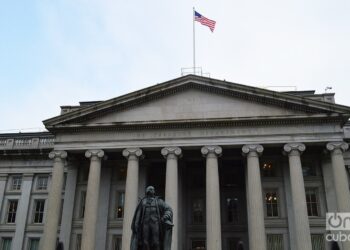The birth of the town of Gloriosa Santa Clara occurred on July 15, 1689 under a leafy tamarind. There, mass was said for the neighbors who had come from San Juan de los Remedios – eighth village founded by the Spaniards in the Island and Monument City – to found this new village.
Historians still do not agree on the reasons that obliged the families living on the coast to move inland and found a new settlement. Many think they fled from the constant attacks by corsairs and pirates who scourged the country’s central zone during the 16th and 17th centuries; others say this was only a pretext to disguise the economic reasons that made them depart.
The truth is that Santa Clara was founded already 323 years ago, and to leave token of it a monument was built in El Carmen Park, close to the church of the same name.
But another park and another monument would be the ones to identify the city in the love and memories of its inhabitants and of those who arrive from the most dissimilar places of the Island and the planet to visit it. These are the Leoncio Vidal Park and the sculpture of the Boy with the Unfortunate Boot.
The city’s life focuses on the park and its surroundings. The rhythm of urban Santa Clara may be sensed on its benches, in the steps that cross the park in any of the possible directions. The Vidal Park is meeting place, starting point or simply a stop during the day’s journey.
The Boy with the Unfortunate Boot has accompanied the city and its inhabitants since 1925. The figure had seduced Colonel Francisco López Leiva when seen in the catalogue of the J.L. Mott Company art shop of New York, and he had it brought to Cuba and set up in the fountain of his own design.
It was thus that the calamine boy appeared in the park, with military cap and uniform and wearing only one boot, since he is holding the other one, and from it pours the water of the fountain inaugurated together with the park on July 15, 1927, on the 238th anniversary of the founding of the village.
Years later, the small statue that reminds of the drummer boys in the U.S. Civil war who many times used their own boots to give water to the surviving soldiers was damaged and replaced.
The second statue was made of molten bronze and was received with joy by the neighbors when set up in the 1970s. This unexpectedly added a new copy to the 23 already made by J.L. Mott’s company of the original Italian piece, all of which are disseminated throughout the world.
The truth is that both the neighbors of Santa Clara and many other Cubans consider the Boy with the Unfortunate Boot as one of the symbols of this city, together with La Caridad Theater and the monumental complex dedicated to Che Guevara.
Although it was brought from another country and has nothing to do with Cuban cultural roots, the small sculpture identifies this city in the center of the Island, an almost inevitable spot for those traveling to and from the eastern region.










